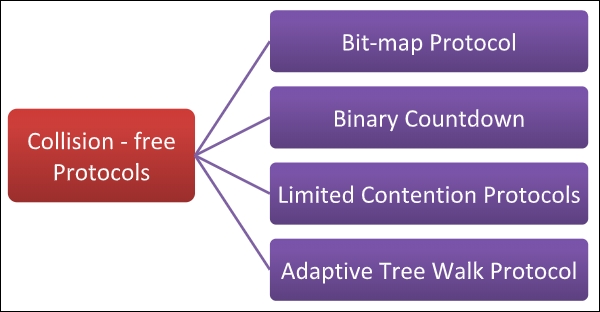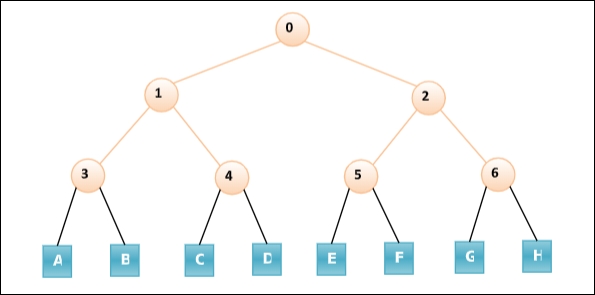
 Data Structure
Data Structure Networking
Networking RDBMS
RDBMS Operating System
Operating System Java
Java MS Excel
MS Excel iOS
iOS HTML
HTML CSS
CSS Android
Android Python
Python C Programming
C Programming C++
C++ C#
C# MongoDB
MongoDB MySQL
MySQL Javascript
Javascript PHP
PHP
- Selected Reading
- UPSC IAS Exams Notes
- Developer's Best Practices
- Questions and Answers
- Effective Resume Writing
- HR Interview Questions
- Computer Glossary
- Who is Who
Collision-Free Protocols
In computer networks, when more than one station tries to transmit simultaneously via a shared channel, the transmitted data is garbled. This event is called collision. The Medium Access Control (MAC) layer of the OSI model is responsible for handling collision of frames. Collision – free protocols are devised so that collisions do not occur. Protocols like CSMA/CD and CSMA/CA nullifies the possibility of collisions once the transmission channel is acquired by any station. However, collision can still occur during the contention period if more than one stations starts to transmit at the same time. Collision – free protocols resolves collision in the contention period and so the possibilities of collisions are eliminated.
Types of Collision – free Protocols
Bit – map Protocol
In bit map protocol, the contention period is divided into N slots, where N is the total number of stations sharing the channel. If a station has a frame to send, it sets the corresponding bit in the slot. So, before transmission, each station knows whether the other stations want to transmit. Collisions are avoided by mutual agreement among the contending stations on who gets the channel.
Binary Countdown
This protocol overcomes the overhead of 1 bit per station of the bit – map protocol. Here, binary addresses of equal lengths are assigned to each station. For example, if there are 6 stations, they may be assigned the binary addresses 001, 010, 011, 100, 101 and 110. All stations wanting to communicate broadcast their addresses. The station with higher address gets the higher priority for transmitting.
Limited Contention Protocols
These protocols combines the advantages of collision based protocols and collision free protocols. Under light load, they behave like ALOHA scheme. Under heavy load, they behave like bitmap protocols.
Adaptive Tree Walk Protocol
In adaptive tree walk protocol, the stations or nodes are arranged in the form of a binary tree as follows -
Initially all nodes (A, B ……. G, H) are permitted to compete for the channel. If a node is successful in acquiring the channel, it transmits its frame. In case of collision, the nodes are divided into two groups (A, B, C, D in one group and E, F, G, H in another group). Nodes belonging to only one of them is permitted for competing. This process continues until successful transmission occurs.



